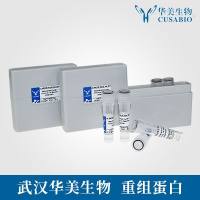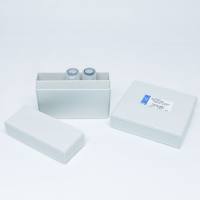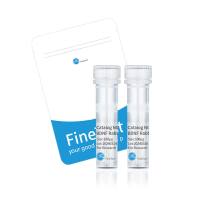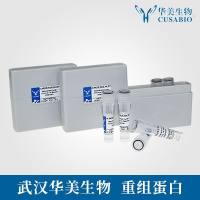UPDATED DIRECTIONS FOR NEW BRUNSWICK MOBILE PILOT PLANT FERMENTOR
互联网
Hahn Lab
Check manuals for more detailed information .
Please Note: We have been having problems with the seal and bearing assembly at the bottom of the unit which allows the shaft to rotate inside the growth chamber.
It is important to always have seal steam pressure (10-15 psi) when stirring the media, even if the unit is not in sterilization mode. This is because the steam condensate is necessary to lubricate the seal. Make sure the seal steam pressure is up to the necessary pressure before turning on the agitation. It can sometimes take ~5 min for the pressure to come up after turning on the machine and the steam line.
Currently the adjustment of seal steam pressure at the seal steam pressure gague does not work. If necessary, adjust the seal steam pressure by turning the seal steam knob (red). This should normally be open ~ 1 1/4 turn (black mark on knob should be ~straight up). The seal steam condenser water knob should be fully open.
See Steve Hahn if you have any questions or comments
<center> <h2> <font>Set Up</font></h2> </center>
1. Drain any water left in the fermentor. Open filling port cap on headplate. Remove drain port steam cap, open drain port and collect liquid. Close drain port and replace steam cap.
2. With fermentor vessel empty, remove pH probe and calibrate if desired (The probe may not have to be recalibrated very often). To calibrate, immerse the electrode in pH 7 reference buffer, turn the selector switch to pH and rotate the mode switch to zero. After the pH has stabilized, adjust the pH if necessary using the increase/decrease switch. Rinse the probe with DI water and set the mode switch to span. Immerse in pH 10 reference buffer and adjust the pH reading if necessary. Replace the pH probe in the fermentor vessel and check that it is pressurized to 2 atm. using the bicycle pump. After sterilization, check the pH of the media with a pH meter and adjust the pH zero point on fermentor if necessary. If you use the pH probe, remove it from the fermentor after use and store in the appropriate cabinet drawer.
3. Check that all 4 addition ports are closed (acid, base, antifoam, inoculation, and especially sampling ports).
4 Check that all steam and steam drain lines to ports are closed (2 each; acid, base, antifoam, inoculation. 1 each; drain valve steam, vessel drain port steam, transfer line condensate, sampling steam).
5. Check that all bolts on headplate are tightened.
6. Check water filter and change if necessary. (the filter is usually good for 24-36 hours of use).
7. Turn on main power.
8. Turn on main service valves for steam, water and air.
9. Open air, water, and steam valves on fermentor. Check for leaks.
10. Make sure seal steam and seal steam condenser water valves are open as noted above.
11. Check the seal steam pressure valve (10-15 PSIG; lower left hand corner). (Normally it is not necessary to adjust the seal steam pressure valve, but very important that the pressure be at the above value during fermentor use). It might take 5-10 minutes for the pressure to reach 10-15 psi. Do not turn on agitation unless the pressure is up to the required value
12. Check air, steam, and water pressure.
Steam @ 30 PSIG (steam pressure usually doesn't reach maximum until sterilization temp is reached)
Water @ 25 PSIG
Instrument air 60 PSIG
Process air 40-120 PSIG (usually about 70)
Except in unusual cases, it is not necessary to adjust the steam, air or water pressure regulators. If necessary, adjust pressures at pressure regulators; usually something else is wrong, not the pressure regulators.
13. If using the pH electrode, Use bicycle pump to pressurize pH electrode to about 2 units.
1. Open filing port cap on headplate and add media to desired level. 10 L min, 30 L max. Add antifoam. (Do not use a silicone based antifoam if the tangential flow concentrator will be used!. Use Antifoam 204; ~1/4 capful/30 liters). Replace filling port cap.
2. Set agitation to 250 RPM.
Adjust air regulator on front of fermentor to 20 PSIG.
Open the grey flowmeter valve to check that air is flowing into the growth chamber. Set airflow at ~10 using the flowmeter valve. Leave valve open during sterilization.
Make sure that exhaust heater condensate valve is closed.
3. If the instrument has not been operated recently, check that the circulation pump is primed. Rotate the selector switch to temperature and the mode switch to set. Reduce the set temperature 10o to 15o below the vessel temperature. This will circulate water through the cooling system. After about a minute, increase the temperature to the desired growth temperature.
4. Set sterilization time (60-90 min usually). Set desired growth temperature if not done in step 3 above.
5. Start sterilization cycle.
6. At ~100o open steam and steam drain lines to ports (2 each; acid, base, antifoam, inoculation). Leave open about 2 minutes, then close. Open drain valve steam, vessel drain port steam, sampling steam. Leave open about 2 minutes, then close all steam and drain lines.
7. At 121.5o fermentor begins timing the sterilization cycle. After this period is over, automatic cool down begins. Fermentor enters growth mode when within 10o of the growth temperature. Pressure should not exceed 25 psi during sterilization.
8. After growth mode is started, Acid, Base, and antifoam bottles (which have been autoclaved separately) can be attached to their addition ports if desired.
9. Open exhaust heater condensate valve soon after sterilization cycle is complete (during cooldown cycle is OK) .
10. Adjust air regulator on the front of fermentor to 35 PSIG.
Adjust air flow valve to desired value. Usually about 12-15 if using like a shake flask.
Check the vessel pressure after the airflow valve is open to the desired value. The vessel pressure should normally be 1-2 psi to maintain positive pressure in the vessel. Anything higher will prevent the peristaltic pumps from adding media to the growth chamber. If necessary, adjust the grey exhaust backflow valve (black knob on back of fermentor) to set the vessel pressure.
11. Connect high foam probe on exhaust line at top of headplate. Also connect antifoam probe if desired and adjust the height of the probe if necessary.
12. If desired, install and calibrate D.O. probe. Agitate fermentor at 400-500 RPM with desired air flow for 15 to 30 min. to completely saturate media with oxygen. With D.O. line disconnected, turn selector switch to D.O. and mode switch to zero. Set at value at zero. Remove grounding cap from D.O. probe and connect D.O. line. Set mode switch to span. when D.O. level has stabilized, set at 100%. Rotate mode switch to set point and enter value of desired D.O. level if auto D.O. control is to be used. Set agitation control at desired value (usually 200-300 RPM)
13. Set desired pH value if auto pH control is to be used.
14. If necessary, adjust exhaust regulator valve at rear of fermentor to set pressure in vessel (usually 1-4 PSIG); this does not normally have to be set. Auto addition pumps (acid, base, antifoam) will not operate at >7 PSIG.
15. Turn on auto D.O. control if desired. When auto D.O. control is activated, the agitation RPM is varied to maintain the set D.O. level. To set the minimum speed, set the mode switch to set point and the selector switch to agitation. Enter the minimum agitation value. Turn on the D.O. control active switch. Now enter the maximum agitation value.
16. Set mode switch to control.
<center> <h2> <font><b>Sterile Shutdown of the Fermentor After Sterilization</b> </font></h2> </center>
This operation is typically done if the media is sterilized one day but the cells will not be innoculated until the next day (for example, growth of bacteria to a low OD for induction of protein synthesis).
It is important that the fermentor be shut down with a positive pressure in the vessel. Otherwise, room air can be sucked through the exhaust valve back into the vessel, contaminating the sterile media.
1. After sterilization and cooldown, increase the airflow until the vessel pressure reaches ~10 psi.
2. Shut down the air service valve at the copper pipe on the wall of the fermentor room. This activates the exhaust line selonoid to seal the exhaust line.
3. Turn off fermentor electrical power at the main switch.
4. Turn off the steam and water service lines.
5. The vessel should maintain pressure for at least two hours if the system is sealed properly. Any further variation in pressure is usually do to a change in temperature of the vessel.
<center> <h2> <font>INOCULATION</font></h2> </center>
1. Close airflow knob and release vessel pressure. Turn off agitation.
2. Open filling port cap and add required nutrients and inoculate with culture. Close cap, open airflow knob to desired level, and turn on agitation.
1. Check that sampling port steam valve is closed.
2. Remove sampling port steam cap. Open sampling port. Remove a few ml and discard. Collect sample.
3. Replace steam cap. Open sampling steam valve for about 5 min. to sterilize and then turn off.
1. Close flowmeter valve. Turn off agitation. Release vessel pressure and remove filling port cap.
2. Open drain valve and remove product.
3. Close drain valve.
1. Remove D.O. probe cable and replace with grounding cap. Failure to replace grounding cap can result in severe damage to electronic components.
2. If fermentor is not to be used immediately, it must be cleaned. Rinse several times with water and then fill with at least 10 liters of water. Sterilize for at least 20 min. After cool down has been achieved, turn off main service air, water and steam lines. Also close air, water, and steam valves on fermentor.
3. Release vessel pressure using one of the acid, base, or antifoam ports. Close port. Turn off power.
If especially noxious or heat resistant bugs have been grown, the headplate should be removed and the vessel, headplate, and headplate seal should be cleaned with a mild detergent and a sponge. Before removing the headplate, the DO. probe must be removed. When reinstalling probe, be sure to seal threads with teflon tape. The DO. probe membrane should be changed after 10-15 fermentor runs.
上一篇:Simplified instructions for NOVEX NuPAGE Gels 下一篇:PEAS Labeling Gcn4-cys









